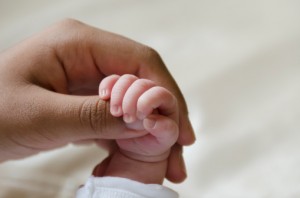Researchers Determine Why Hypothermia is Effective Treatment for HIE
 A new study explores why hypothermia is an effective treatment for some babies diagnosed with hypoxic-ischemic encephalopathy (HIE) after birth.
A new study explores why hypothermia is an effective treatment for some babies diagnosed with hypoxic-ischemic encephalopathy (HIE) after birth.
The unusual treatment has been found to reduce the number of deaths and disabilities caused by HIE, but until now, doctors were unsure why the procedure was effective for some babies and not for others.
What is Hypothermia?
Hypothermia is excessively low body temperature, which slows down bodily systems as blood supply is reduced throughout the body. Hypothermia due to being out in cold temperatures or immersed in cold water for a prolonged period of time can lead to severe injury and even death. However, when cooling is targeted to a newborn’s brain that has been deprived of oxygen during the birth process, the colder temperatures can prevent injury to the brain and preserve the life of the infant in some cases.
What is HIE?
HIE is an injury to the brain caused by oxygen deprivation during the birth process. Longer periods of oxygen deprivation can lead to the actual death of some brain tissue, often resulting in permanent brain damage and severe impairment. HIE is the number one cause of death in newborns and also leads to significant disabilities like cerebral palsy, epilepsy and blindness. HIE affects approximately 1.5 of every 1,000 infants born in the U.S. today.
Why hypothermia therapy works
Researchers from the Children’s Hospital Los Angeles used magnetic resonance spectroscopy (MRS) to assess the brains of 31 infants with HIE while they were undergoing hypothermia treatment. Researchers found that hypothermia therapy provided a dual benefit in the brains of these newborns; enhancing both cell metabolism (generation of energy cells need to survive) and neurotransmission (communication between the brain and the rest of the body). The brain requires proper balance between these two functions in order to develop properly.
While scientists have known for some time that brain injury from HIE is gradual, they did not have specific information on how best to administer hypothermia therapy to produce the best possible outcome for newborns. The hope of the researchers is that by pinpointing the exact ways in which hypothermia works, they will be able to effectively treat more infants with HIE using this therapy.
Consequences of HIE
HIE can be the result of many factors, including errors during the labor and delivery process. Failure to perform a timely Cesarean delivery or improper administration of certain drugs can increase the risk for HIE. In some cases, a split-second decision may be required to safely deliver the child and prevent oxygen deprivation and subsequent birth injuries.
When physicians fail to properly react to impending birth asphyxia, the oxygen deprivation can be significant enough to lead to cerebral palsy, brain damage and other lasting health complications. The consequences of these errors can mean the inability for the child to ever lead a normal, independent life. For the parents, severe brain damage or injury can mean significant financial strain as the child may require lifelong care.
- Science 2.0, Protecting Newborn Brains from Hypoxic-Ischemic Encephalopathy Using Hypothermia, http://www.science20.com/news_articles/protecting_newborn_brains_from_hypoxicischemic_encephalopathy_using_hypothermia-157432
- Tech Times, Extreme Cold can Save an Injured Baby’s Brain, But Why? http://www.techtimes.com/articles/93242/20151008/extreme-cold-save-injured-baby-brain-why.htm
- Children’s Hospital Los Angeles, Protecting Newborn Brains Using Hypothermia, http://www.chla.org/press-release/protecting-newborn-brains-using-hypothermia
- CerebralPalsy.org, Hypoxic-Ischemic Encephalopathy, http://cerebralpalsy.org/about-cerebral-palsy/cause/hypoxic-ischemic-encephalopathy/


 Resources
Resources
 Resources
Resources
